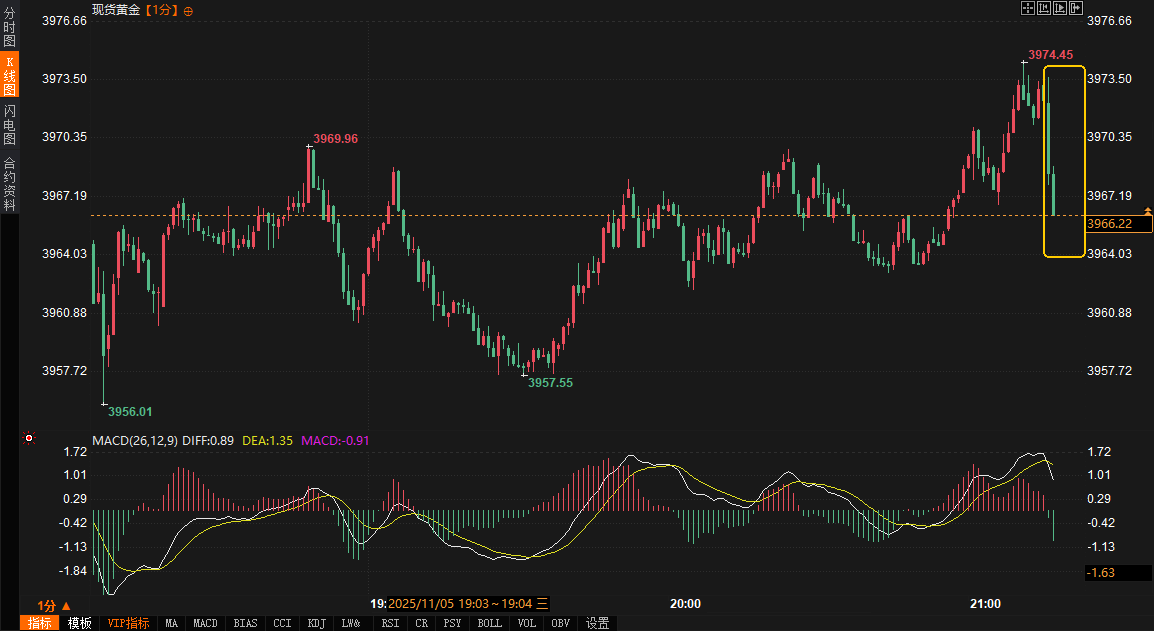ADP data pushed the dollar close to a critical point, but the real game has only just begun!
2025-11-05 21:34:11

Shifts in data context and market expectations
This data release comes against a complex macroeconomic backdrop: the ongoing Russia-Ukraine conflict, pressure on global supply chains, renewed talk of tariffs, and a data vacuum created by the government shutdown have made investors particularly sensitive to employment indicators. The September ADP data had previously triggered concerns about an economic slowdown, with market expectations for a December Fed rate cut exceeding 80%. Although the October weekly employment data showed signs of stabilization, market expectations remain conservative, with widespread forecasts of only 25,000 to 40,000 new jobs.
Better-than-expected actual data has shifted the market narrative from "continued contraction in hiring" to "the initial signs of a moderate recovery." However, structural differentiation between industries and the sustainability of wage growth remain key concerns for the future.
Market reaction: The correlation between the US dollar, gold, and US Treasury bonds
Following the data release, the US dollar index surged 8 basis points from 100.15 to 100.23, reversing its previous decline and indicating investor confidence in the economy's resilience. Spot gold, however, retreated from its intraday high of $3,973 to $3,966, narrowing its gains and showing significant short-term pressure. US Treasury yields also rose, with both the two-year and ten-year yields increasing by 1 basis point, reflecting market concerns about a potential rebound in inflation.


US stocks reacted relatively restrained in pre-market trading, with S&P 500 futures down slightly by 0.05%. Technology stocks continued their weakness, while financial and cyclical sectors saw slight gains. This trend is similar to the market performance when employment data in the first half of 2025 exceeded expectations, forming a classic pattern of "strong dollar, weak gold."
Policy dilemmas under structural differentiation
While the ADP data eased recession fears, it did not change the Federal Reserve's dovish stance. The report showed that wage growth for retained employees remained stable at 4.5%, while wage growth for job-hoppers was 6.7%, indicating that the labor market supply and demand are approaching equilibrium and inflationary pressures are limited, but this also restricts the Fed's room for further aggressive interest rate cuts.
From an industry perspective, trade, transportation, and utilities saw the addition of 47,000 jobs, becoming the main driver of growth; financial services rebounded with 11,000 jobs, reversing the decline of the previous month. However, manufacturing and professional business services saw decreases of 3,000 and 15,000 jobs respectively, highlighting the uneven performance across industries. If this divergence continues, it could affect overall economic momentum through consumption channels, thereby influencing the Federal Reserve's trade-off between a "soft landing" and "structural risks."
Market Sentiment: Divergent Expectations
Market sentiment was cautious ahead of the data release. Institutional investors like TD Securities predicted an increase of 45,000 jobs, but emphasized that ADP is not a reliable leading indicator for non-farm payroll data. Retail investors, on the other hand, focused more on seasonal factors, worrying that holiday-related temporary hiring might mask the true weakness in the non-farm payrolls data.
Following the data release, institutions shifted to a neutral-to-optimistic stance. MacroMicro noted that the 42,000 increase was the highest since July, supporting a stronger dollar; mrD Indicators suggested gold might face pressure. Retail investors, however, reacted more emotionally, with some viewing it as a "gold selling signal," while others warned of a potential pullback in January after a seasonal rebound. Overall, the discussion shifted from "recession concerns" to "confirmation of a moderate recovery," but the difference between institutions focusing on policy impacts and retail investors focusing on immediate volatility remains significant.
Resonance of technical and fundamental factors
The US dollar index is currently quoted at 100.23, near its recent high. Technically, support lies in the 99.80–100.00 range (based on the October low and Fibonacci retracement), while resistance is around 100.50. Whether it can break through this level depends on confirmation from the ISM services data. If the 10-year US Treasury yield rises further above 3.60%, it could strengthen the dollar's upward momentum; conversely, if gold holds above the $3960 support level, it reflects continued safe-haven demand.
Compared to the panic at the low of 99.50 at the end of September, this round of dollar rebound is more orderly, showing that the market is adapting to the Fed's "gradual easing" policy pace.
Outlook: Hidden Worries Amidst Resilience
In the short term, the government shutdown has delayed the release of non-farm payroll data, making the ISM Services PMI (expected at 50.7) the next market focus. If its employment sub-index continues to weaken, it could reignite expectations of interest rate cuts, pushing the dollar back below the 100 level.
In the medium to long term, the structural divergence in the job market still needs to be addressed through policy. A recovery in trade and finance is expected to support consumption, but continued weakness in manufacturing will test the Federal Reserve's ability to maintain a balance. Going forward, investors should focus on the transmission path from wage growth to consumption momentum, as well as the marginal impact of global geopolitics on supply chains.
Overall, while the ADP data did not change the overall easing policy stance, it did provide the market with some breathing room. Short-term fluctuations are expected to be within a manageable range, while the long-term trend will still depend on the strength of the official employment data recovery and policy responses.
- Risk Warning and Disclaimer
- The market involves risk, and trading may not be suitable for all investors. This article is for reference only and does not constitute personal investment advice, nor does it take into account certain users’ specific investment objectives, financial situation, or other needs. Any investment decisions made based on this information are at your own risk.





















